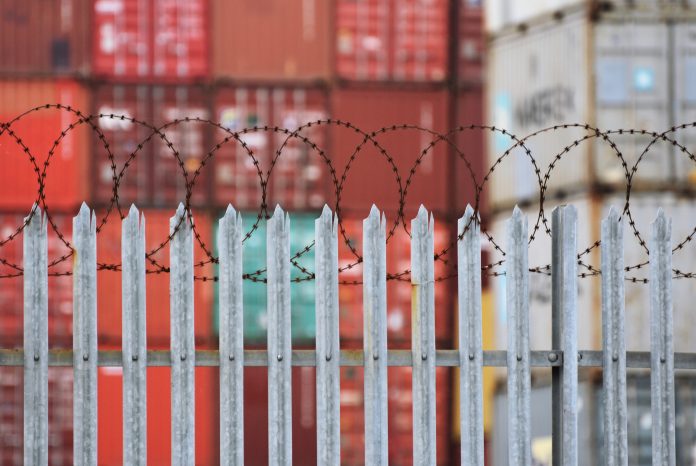Ray Batt, Director, Border Security Programmes Europe, Unisys, offers commentary on reframing the border and the future of trading
Airport e-gates, a line of trucks at a ferry port, a checkpoint on the road – the word ‘border’ usually conjures up an image of a specific place, acting as a frontier and static port of entry for passengers or cargo.
Yet as globalisation accelerates, our borders are becoming more difficult to manage. Every hour of every day, a huge number of travellers and an unprecedented level of cargo moves around the world. While this offers many benefits, it also poses serious challenges, creating a great deal of work for border officers across land, air and sea.
At the same time, political, regulatory and economic machinations mean that what we require from our border officers is shifting, too. And this isn’t just a security issue. As global travel surges and businesses continue to put cargo and staff in transit with increasing regularity, there’s a real commercial impetus for finding a smarter solution. From more stringent immigration rules to growing global criminal and terrorist threats, and even trade in a post-Brexit world, we don’t just need new ways of assessing risk at borders – we need to completely reframe how we think about them.
Beyond borders: The importance of pre-screening
One way this can be achieved is by ‘exporting the border’ and increasing the usage of pre-border screening checks. As it stands, assessing risk is mostly a case of acting on data collected at the physical point of entry – like a review of a bill of goods, or a biometric check of passport information. But as some countries are already proving, you can ‘extend’ the border out from its physical definition, and so block risky passengers or cargo before their journey even begins.
In the US, for example, passengers are pre-screened – and even those who qualify for visa-free travel are assessed under the Electronic System for Travel Authorisation (ESTA) process, which collects biographic information and determines a passenger’s eligibility for entry.
Meanwhile, in 2018, Customs and Border Protection introduced an Air Cargo Advance Screening (ACAS) program, mandating ‘the submission of advanced “pre-load” air cargo information on shipments arriving in the United States from a foreign location’. This Pre Load Air Cargo Information, or PLACI, is used to complement advance risk assessment, helping officers to make more informed decisions, creating a screening mechanism before goods are loaded, and speeding up the physical checking process at the actual border.
This is a strong start, although it’s not just a matter of doing this at airports, which are somewhat easier to regulate. Border agencies also need to find ways of achieving this across land and sea.
Finding the links between risks
It’s also a case of reconsidering the way border officers understand and interpret the relationships between different threats. Once, officers might have targeted specific goods or individuals of interest.
Now, border agencies need to provide their staff with a more joined-up view and the ability to marry up information on passengers, cargo, drivers and routes. Only by doing this can they spot patterns, predict risks, and target effectively. This is known as ‘cross-domain targeting’, and it allows officers to analyse the relationships between countless different factors, providing a bird’s eye view of risk to produce intelligent action at the border.
Implementing cross-domain targeting is partly a matter of improving collaboration between agencies. Despite the effectiveness of this approach, only a small number of countries have integrated agencies which cover both goods and immigration. In the US, for example, Customs and Border Protection (CBP) has been an official agency of the Department of Homeland Security since 2003. In many places, however, this isn’t the case – making the exchange of information more difficult than it needs to be.
The tools for intelligence
Acknowledging these requirements is all well and good – but it all means nothing unless border officers have the right tools to respond accordingly. Even when a significant amount of information is gathered at the border, officers don’t necessarily have the ability to link it up with existing data, spot trends, and react appropriately. So, while the benefits of treating the border as a continuum are clear, it’s also evident that this approach demands the adoption of technological solutions.
Today’s complex threat environment requires the ability to connect the dots across individuals and contraband. Historical approaches have not been able to provide this, and have contributed to the problem of ‘false positives,’ whereby too much of an officer’s time is wasted inspecting items or people wrongly identified as threats.
Current technologies and ‘pattern matching’ tools can also be quickly countered by criminals. Border officers need automated advanced targeting statistical models and machine learning, providing pre-clearance when risk is low, constantly updating algorithms for flagging up journeys that shouldn’t be able to proceed, and creating tailored plans for dealing with higher risk threats as they progress. More automation of manual checks is also needed, so the physical input of border officers isn’t such a pressing requirement.
21st Century borders, reimagined
The reality is, global border management is only going to get more complicated. While we certainly can’t predict the outcome of issues like Brexit, it’s not hard to imagine that border management could be a serious problem for trade – and ongoing global immigration issues will also necessitate a new approach. Automating and reframing the border as a continuum with a series of intervention points can help to meet this increasing burden, but this can only be achieved at scale if border agencies strive to collaborate and invest in the right tools for the job.





![Europe’s housing crisis: A fundamental social right under pressure Run-down appartment building in southeast Europe set before a moody evening sky. High dynamic range photo. Please see my related collections... [url=search/lightbox/7431206][img]http://i161.photobucket.com/albums/t218/dave9296/Lightbox_Vetta.jpg[/img][/url]](https://www.openaccessgovernment.org/wp-content/uploads/2025/04/iStock-108309610-218x150.jpg)





